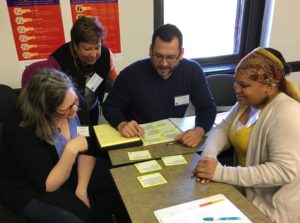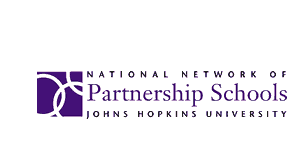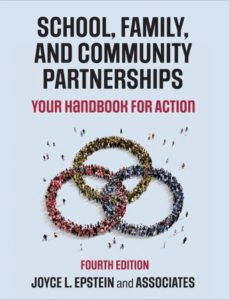State Model

States differ greatly in the number of districts, schools, and populations of students and families served. Just about every state has a policy to improve family and community engagement in children’s education. NNPS assists state departments of education to guide regional and district leaders to ensure that all schools implement the official policy and continually improve their own partnership programs.
A state-level leader for partnerships is needed to coordinate efforts of family involvement and to communicate about partnerships across departments and across jurisdictions. Leadership on partnerships should encourage districts and schools –statewide – to develop plans, implement activities, and meet the requirements and expectations for effective partnership programs in state policy and in the Every Student Succeeds Act (ESSA) Section 1010.
NNPS supports state leaders for partnerships by providing professional development and on-going technical assistance to increase knowledge on school, family, and community partnerships, organize state-level plans, and encourage districts and schools across the state to increase the quality of their goal-oriented partnership programs.
This section of the website provides tools, guidelines, and information for state leaders including:
-
- States Lead and Succeed. This inventory of state leadership activities should improve the quality of partnership programs at the state level and in regions, districts, and schools throughout the state.
- State Leadership Checklist. Take basic steps to advance partnership programs at the state, regional, district, and school levels.
- Program Evaluation. Annual UPDATE surveys from NNPS will help your state evaluate the quality and progress of its partnership program. Districts and schools in your state that join NNPS also will use UPDATEs to evaluate their programs of family and community involvement. See other “built in” evaluation tools in the NNPS Handbook for Action (4th Edition).
- Materials that state leaders may use to make presentations and conduct workshops on partnerships in the section Publications and Products.
- Opportunities for professional development from NNPS at the fall or spring Leadership Institute, and other workshops in the section Professional Development.
- Other benefits and services from NNPS for members.
For more information and planning tools, state leaders will find clear and useful guidelines in Chapter 7 of the NNPS Handbook: Epstein, et al. (2019). School, family, and community partnerships: Your handbook for action, fourth edition. Thousand Oaks, CA: Corwin Press. The chapter includes background information on state leadership, a list of state leaders’ roles, sources of funding for partnership programs, the leadership checklist, and sample One-Year Leadership Plans for partnerships.
Each state that joins NNPS must identify a leader for partnerships who becomes the Key Contact to NNPS. On the website, see the section Join NNPS for more information.
NNPS is a thrifty, proven, and helpful resource for partnership program development. States, organizations, districts, and school will use other resources, too, to improve family and community engagement.
Copyright © 2023 - PartnershipSchools.org at the Johns Hopkins University School of Education - All rights reserved. Conforms to W3C Standard XHTML & CSS

